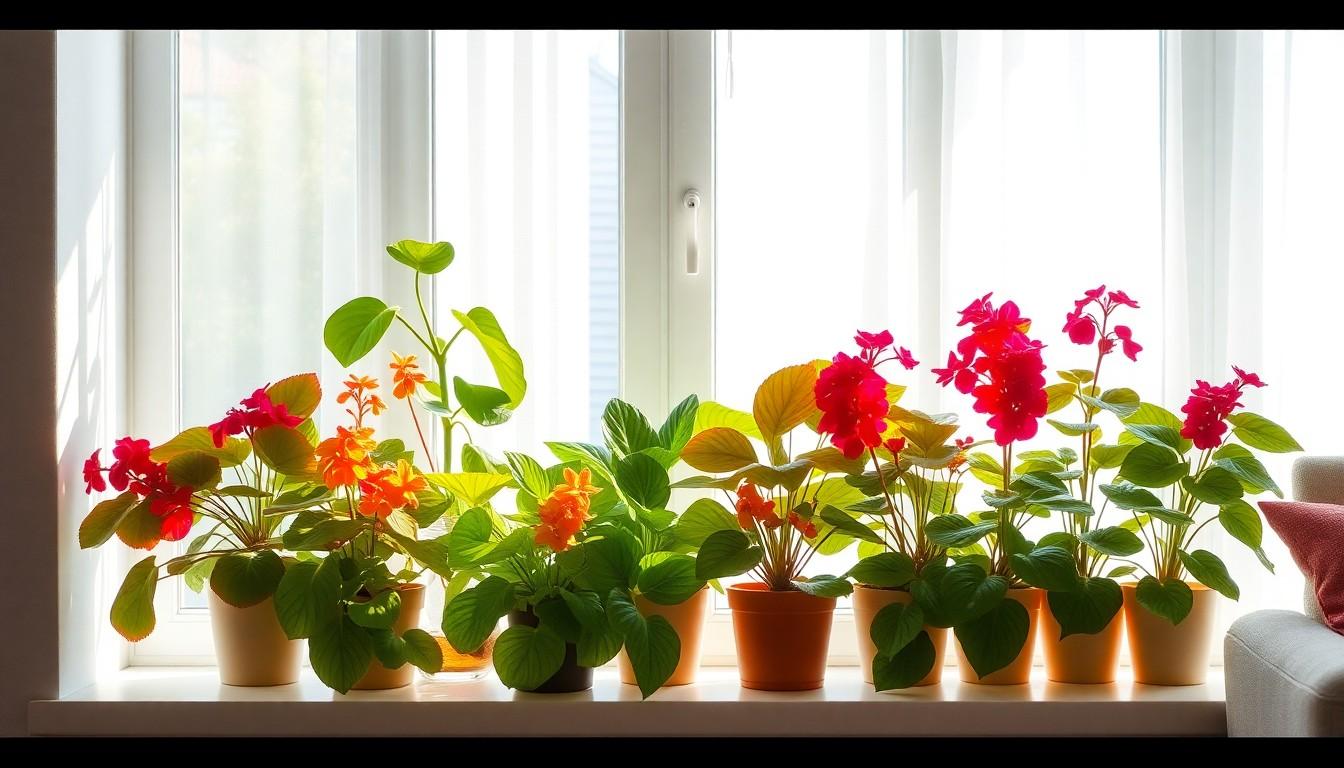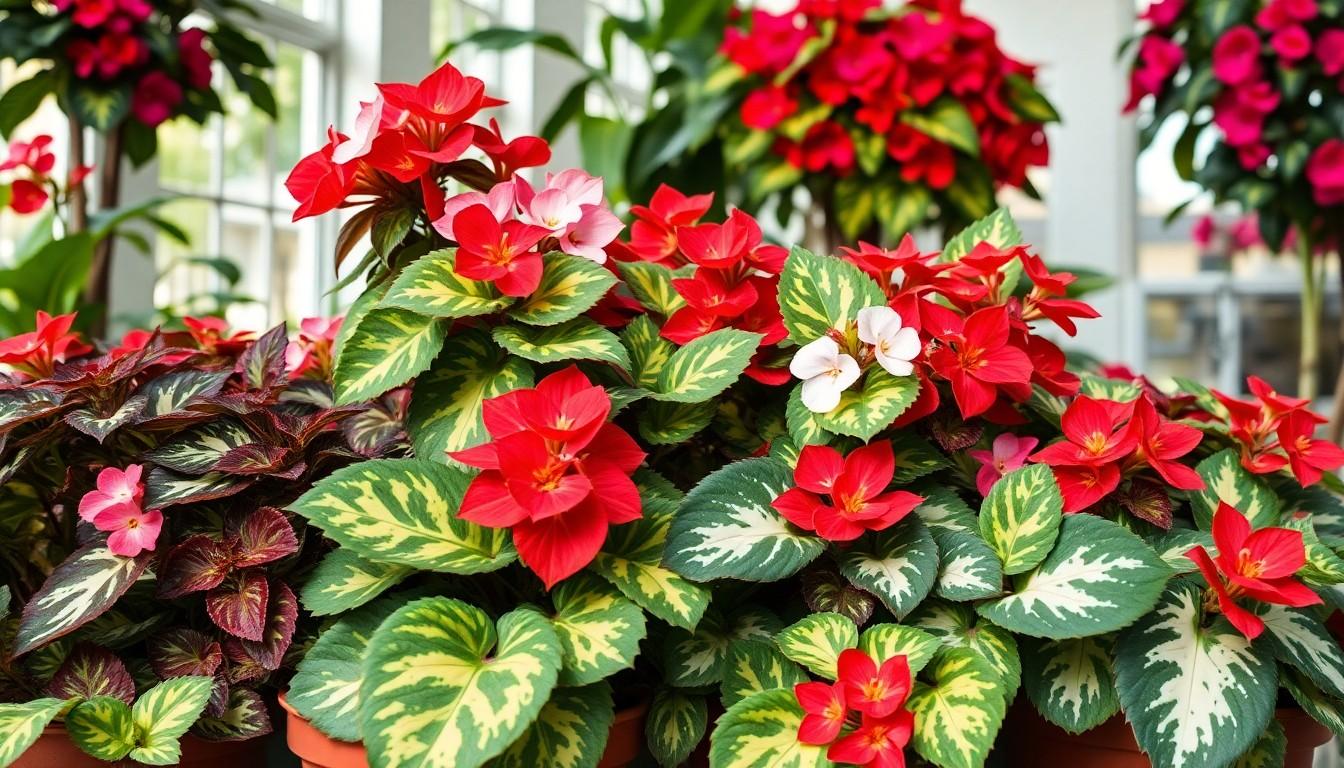Phone:
(701)814-6992
Physical address:
6296 Donnelly Plaza
Ratkeville, Bahamas.

If you’re on the hunt for a houseplant that screams personality without demanding a PhD in botany, begonia house plants are your new best friends. With their vibrant leaves and stunning flowers, these little green wonders can turn any dull corner into a botanical paradise. Plus, they’re like the social butterflies of the plant world—always ready to show off their colors and charm.
Begonias come in a variety of shapes and sizes, making them perfect for any home decor. Whether you’re a seasoned plant parent or just starting your indoor jungle, these beauties are low-maintenance and high-impact. So why not invite some begonia magic into your life? After all, who wouldn’t want a plant that’s as fabulous as it is forgiving? Let’s dive into the world of begonias and discover why they deserve a prime spot in your home.
Begonia houseplants offer unique beauty through their striking foliage and flowers. Known for vibrant colors, various species enhance indoor environments beautifully. Leaf shapes and patterns vary greatly, making each begonia distinct.
These plants thrive in indirect sunlight, preferring moderate conditions. Humidity plays a crucial role in their growth, often flourishing in environments with above-average moisture. Watering requirements are low but consistent; wait until the soil dries slightly before rewatering.
Propagation commonly occurs through leaf cuttings, stem cuttings, or division. This approach allows plant owners to expand their collection easily. Begonias typically bloom during spring and summer; some varieties enjoy year-round flowering.
Common varieties include Rex, Wax, and Rhizomatous begonias. Each type possesses specific care needs and aesthetic characteristics. Rex begonias stand out for their decorative leaves, while Wax begonias feature more straightforward care and larger flowers.
Overall, begonia plants thrive as houseplants due to their versatility. They adapt well to various environments, making them suitable for beginners and experienced plant owners. A diverse selection ensures that anyone can find the perfect fit for their home decor.

Begonias come in several varieties, each adding distinct beauty to home environments. Understanding these types helps in selecting the right one for specific decor styles.
Flowering begonias offer stunning blooms, adding vibrant colors to indoor spaces. The Begonia elatior features small flowers in shades of red, pink, or white, making it perfect for brightening any room. Another popular choice, Begonia x tuberhybrida, boasts large, showy flowers ideal for window displays. These flowering varieties thrive best in bright, but indirect sunlight, ensuring prolonged blooming periods. Regular watering keeps the soil moist, while occasional fertilization supports flower development.
Foliage begonias provide dramatic leaves that capture attention. The Rex begonia attracts with its large, multicolored leaves that vary in shape and texture. Begonia Maculata, known as the polka dot begonia, showcases striking white spots against dark green foliage. These plants prefer moderate humidity and indirect light, promoting healthy growth. Maintaining soil moisture without waterlogged conditions is essential for vibrant foliage, as well as routine leaf cleaning to enhance their aesthetic appeal.
Begonia houseplants thrive with specific care. Understanding their needs ensures vibrant growth and health.
Bright, indirect sunlight suits most begonia varieties. Shielding them from direct sun prevents leaf scorch. Placing begonias near east or north-facing windows works best. Adequate light promotes lush foliage and flowering potential. Some varieties tolerate lower light levels but may grow slower.
Watering requires consistency and careful attention. It’s essential to keep the soil slightly moist, avoiding waterlogged conditions. Checking the top inch of soil for dryness provides a reliable guide. Wilting leaves indicate underwatering, while yellowing can signal overwatering. Using room temperature water promotes optimal growth.
Fertilizing begonias enhances their overall health. A balanced, water-soluble fertilizer diluted to half-strength applies during the growing season. Monthly applications support vibrant foliage and blooms. Reducing or skipping fertilizer in winter aligns with their dormant growth phase. Observing plant response allows for adjustments as needed.
Begonias can encounter various pests and diseases, which may affect their health and appearance. Identifying these issues early helps maintain the plant’s vibrant beauty.
Common pests include aphids, mealybugs, and spider mites. Aphids often cluster on new growth, causing curling leaves. Mealybugs appear as white, cotton-like masses, typically on leaf undersides. Spider mites create webbing, particularly on the leaf surface, leading to yellowing leaves. Fungal infections may cause leaf spots or powdery mildew, appearing on both foliage and stems. Regularly inspecting the plants for these signs promotes early detection and effective treatment.
Applying insecticidal soap can eliminate pests like aphids and mealybugs. Systemic insecticides effectively target various pests, providing long-lasting protection. For spider mites, increasing humidity can disrupt their life cycle, along with neem oil application as a natural remedy. Monitoring watering habits helps prevent fungal growth, with proper air circulation crucial for avoiding powdery mildew. Removing infected leaves prevents spread and keeps the plant healthier overall.
Growing begonia house plants offers multiple advantages that enhance indoor living environments. Their striking visuals create immediate appeal, adding color and texture to any space. Begonias serve as natural air purifiers, helping to improve indoor air quality by filtering out toxins.
Different varieties provide options for diverse aesthetics, from the bold patterns of Rex begonias to the delicate blooms of Begonia elatior. Low maintenance makes them suitable for beginners, allowing individuals to enjoy beautiful plants without extensive gardening experience. Optimal growth conditions require only indirect sunlight and moderate humidity, making them adaptable to various home settings.
People find joy in propagating begonias through simple methods like leaf cuttings or division, expanding their plant collection effortlessly. Regularly watering these plants ensures they thrive, as soil should remain slightly moist but not waterlogged. Seasonal fertilization with a balanced, water-soluble fertilizer supports vigorous growth and vibrant foliage.
Begonias naturally deter pests due to their robust nature, although some common issues can still arise. Quick identification of pests like aphids and spider mites helps maintain plant health. Essential care practices, such as maintaining proper humidity and air circulation, promote longevity and beauty.
Finally, incorporating begonias into home decor fosters a warm, inviting atmosphere. Many individuals appreciate the charming presence these plants bring to living spaces while reaping the benefits of their easy care and stunning appearance.
Adding begonia houseplants to any space brings a unique blend of beauty and ease. Their vibrant foliage and flowers can transform interiors while requiring minimal care. With a variety of types to choose from, there’s a begonia suited for every decor style and skill level.
Their adaptability and low maintenance make them perfect for both novice and seasoned plant enthusiasts. By understanding their specific needs and addressing potential issues early, anyone can enjoy the charm that begonias offer. Embracing these stunning plants not only enhances home aesthetics but also contributes to a healthier living environment.